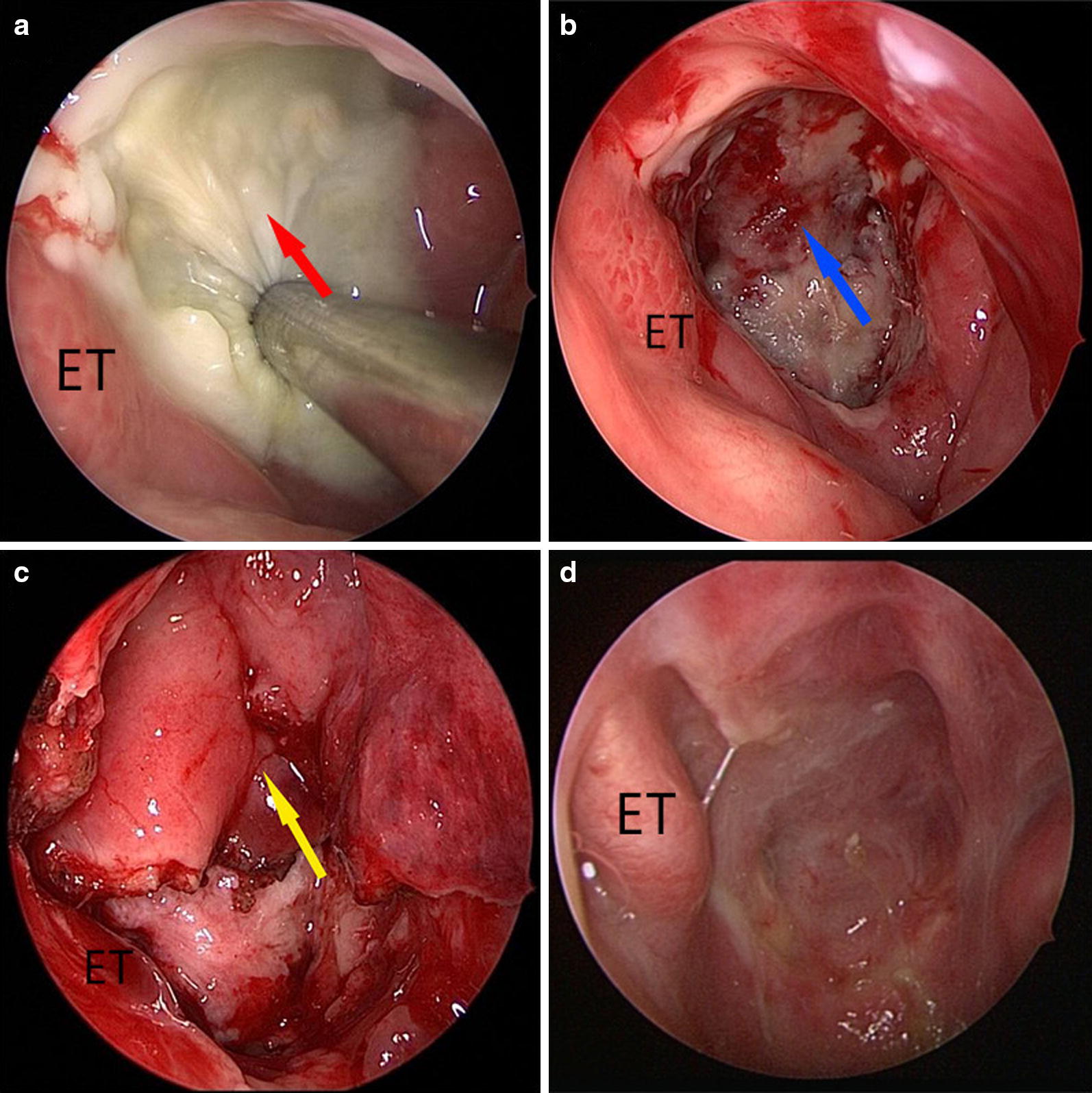Fig. 1.

The radical endoscopic necrectomy followed by reconstruction using a posterior pedicle nasal septum and floor mucoperiosteum flap to resurface the nasopharyngeal defects in a 62-year-old man with post-radiation nasopharyngeal necrosis (PRNN). a–d display the anterior views of the nasal and nasopharyngeal cavity. a After full exposure of the nasopharyngeal cavity, the PRNN (indicated by the red arrow) in the roof of the posterior wall of the nasopharyngeal cavity was observed after removing purulent nasopharyngeal secretions using a steel suction apparatus. b After radical endoscopic necrectomy, the skull base (indicated by the blue arrow) and normal tissues were exposed. c In the ipsilateral nasal cavity, the flap (indicated by the yellow arrow) re-covered the nasopharyngeal defect. d Eight weeks after surgery, the NSFF completely relined the nasopharyngeal mucosa. ET eustachian tube, NSFF posterior pedicle nasal septum, and floor mucoperiosteum flap
